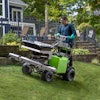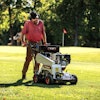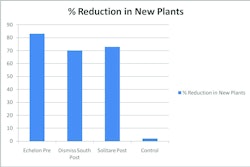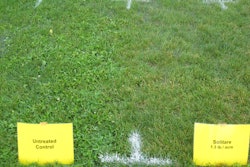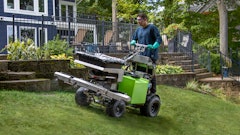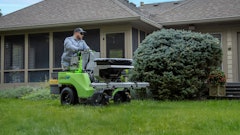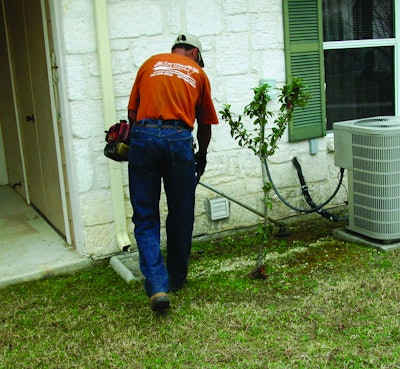
Dormancy is a defense mechanism nature has developed to help plants survive tough, stressful conditions. It’s pretty hard to completely avoid dormancy during the dog days of summer, but there are things you can do to help lessen its impact on turf.
Identifying Summer Dormancy
Visually inspect the lawn. Look for grass leaves and stems that have turned browned, as this means the crowns and buds have stopped growing. A brown and crispy appearance likely means summer dormancy.
It’s important to catch it early. Grasses will usually return to a healthy state when the temperature drops and adequate moisture returns—if they were properly cared for during the dormancy period. If not, they’ll likely die and never recover.
“Grasses such as Bluegrass can typically withstand about six weeks of dormancy before they suffer drought damage,” says Chris Lemcke of Weed Man. “However, many lawns have Annual Bluegrass mixed in. In this case, the lawn can suffer drought damage in a very short period of dormancy. Plus, other factors can accelerate things, such as secondary heat off of buildings or fences. Homes with south-facing slopes almost always suffer drought damage in only a few weeks of dormancy.”
Reacting to Summer Dormancy
Lawns that go dormant should be left dormant until cooler weather comes along. “Trying to bring the lawn back out of dormancy by putting lots of water on it can be very stressful to the turf,” Lemcke points out. “It is turf’s natural response to go into dormancy until it gets cooler.”
Occasionally adding water will help fight damage, but don’t overdo it.
Controlling Summer Dormancy Before It Happens
Watering is an important step to managing summer dormancy before it even sets in. Lemcke says early morning watering is the best approach. “This helps avoid disease,” he explains. “The water will not lay stagnant in the grass overnight, which allows diseases to travel into the plant’s system. Plus, early morning watering allows for less water loss due to evaporation, as compared to watering during the middle of the day.”
Watering should be done deeply once or twice a week, according to Lemcke. Watering lightly every day, as many people do, is actually not the best strategy. “The best rule of thumb is 1.5 inches a week, when needed,” Lemcke says. “If there is an irrigation system that doesn’t have a rain sensor, watering one or two times a week for an hour each time is about right, in most cases.
Fertilizing responsibly is another important control tool. “Proper fertilization helps keep the lawn healthy, allowing grass to survive extended periods of drought and recover faster,” Lemcke says.
Controlled- or slow-release fertilizers are an increasingly popular product. They gradually release nutrients bit by bit over time, which is a more effective, ecologically responsible method of feeding turn, many Green Industry Pros argue.
Mowing is the final consideration. Many professional lawn mowing contractors raise their mowing height. This allows for deeper root development than when mowing short. Grass also dries out a lot slower when it’s longer.
“For Bluegrass and Tall Fescue, we recommend mowing the turf as high as possible, which means 3-4 inches during the hottest time of the year,” Lemcke points out. “All of the southern grasses grow the fastest during hot weather, so normal mowing heights would be fine.”

